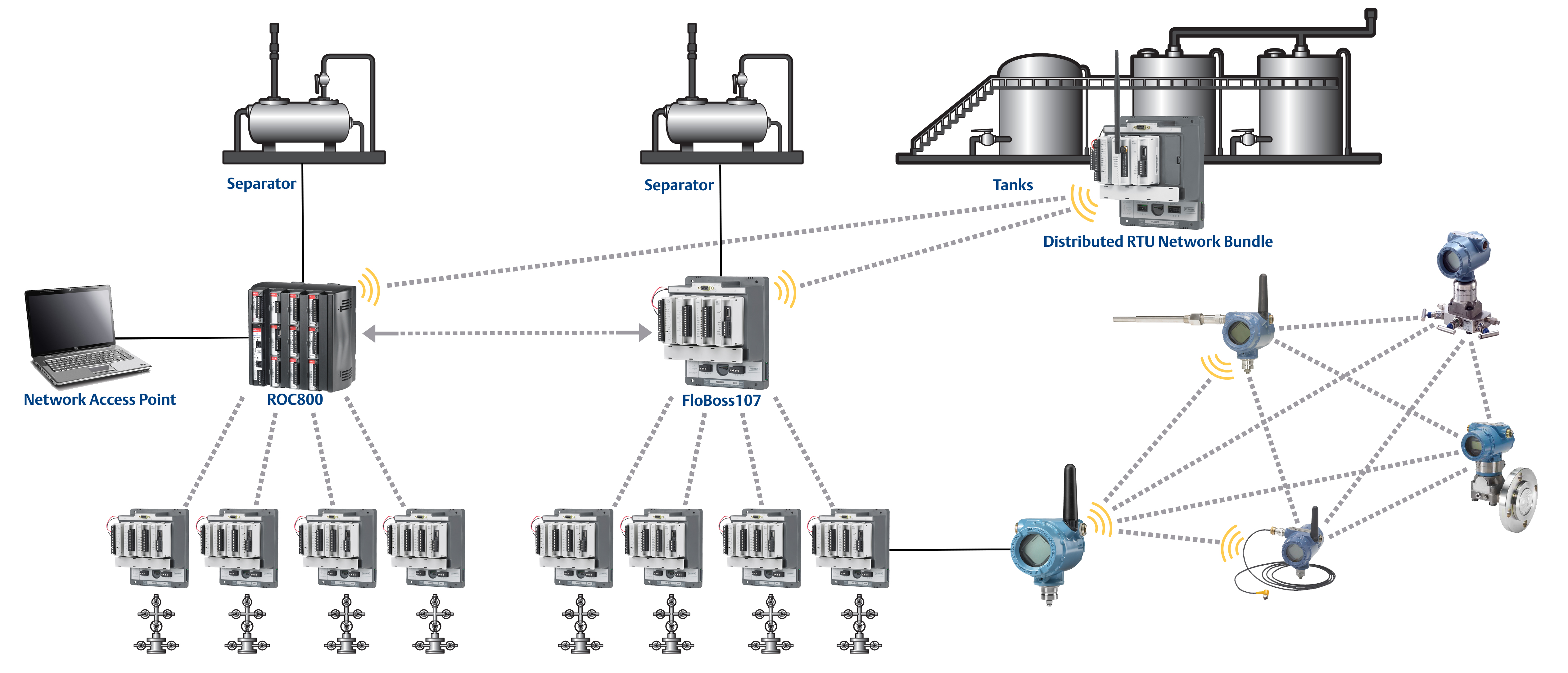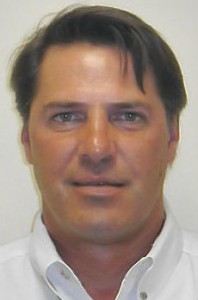October 2014, Vol. 241, No. 10
Features
Remote Diagnostics Surveillance Improves Fiscal Assurance

In the high-risk environment of the oil and gas industry, an enormous amount of resources is employed and devoted to ensuring the environment, the assets we manage and our personnel are protected.
From a business perspective, the overarching discipline of managing change can be categorized as “fiscal assurance” as the focus is upon guaranteeing long-term profitability. To achieve this fiscal assurance, we must know the quality, quantity and physical properties of the fluids we are dealing with, and safely manage the process conditions in which they are handled. Therefore, it is critical that we can rely upon the devices we use to measure and control these fluids.
Historically, assurance the measurement and control systems handling these fluids are operating accurately was achieved by manual inspection and calibration processes performed at predefined intervals. There is a real risk to achieving fiscal assurance when it is possible for the measurement of fluid properties, quality and movement to deviate outside normal control limits in the time intervals between validation events.
Due to the value of the fluids and the potential adverse effects of a catastrophic event, a large amount of fiscal risk is accumulated between inspection and calibration events.
A good example of the potential impact that instrument deviation can have involves a 16-inch gas ultrasonic meter at a Kern River meter station, operated by a large natural gas and electric utilities company. After three years of operation, the meter was removed from service in 2000 due to contamination by compressor oil and debris.
After extensive investigation into the meter’s post-contamination flow performance it was determined the meter was over-registering flow by more than 1%. With the meter normally operating at 200-400 MMcf/d, the effect the meter error had – before the investigation was performed – had been $30,000-60,000 per quarter at current prices of ~$5/Mcf.
Over the last decade, measurement and control technologies have advanced to include self-diagnosed instrument integrity and provide insight into process conditions that can affect measurement performance. Online diagnostic capability has yielded major improvements in maintenance efficiency, but this information for the most part has been stranded at the remote location of the device.
Retrieval of the diagnostic data typically requires travel by technical staff to the device location. In some cases, it includes transfer to an analyst at another location for interpretation. Recent advancements in industrial communications technologies are now providing cost-effective remote access to this information.
These technological advancements are driving a transformation in the way oil and gas companies operate. By using measurement and control technologies that provide online diagnostics and can facilitate remote access to this information, companies are reducing operating risk and improving the fiscal assurance of their operations.
Performance Diagnostics
The ability to tap into secondary measurements that allow for detection of a performance change in a device’s primary measurement is not a new idea. The concept was introduced over three decades ago in turbine and positive displacement flow metering technologies. Because these devices are designed to output pulses at equal intervals by monitoring the symmetry of the pulses output, mechanical damage could be inferred.
Dual rotor turbines were also developed to provide a ratio output between rotors to infer performance change. The difficulty with some of the methods was collecting a record when the meter was calibrated and making comparisons to this record over the post-calibration life of the meter. It was recognized that microcomputers could easily perform the task, but microcomputers were not an economical solution at the time.
Over the years, technologies, such as Coriolis and ultrasonic flowmeters were introduced, making a microcomputer integral to the design. As more was learned about these technologies, it was found that secondary measurements could detect a change in the device performance. With a microcomputer integral to the meter, this enabled designers to tap into this diagnostic capability and provide it to the user.
For ultrasonic meters, signal quality, speed of sound and ultrasonic path velocity ratios are monitored continuously to determine if there is a problem with the transit time measurement or to detect abnormal flow profiles. Ultrasonic meters can also use signal-to-noise ratios to find vapor entrainment in liquid applications and liquid entrainment in gas applications.
For Coriolis meters, signal quality is monitored and density measurement or resonant modal analysis techniques can be used to identify flow performance change. The Coriolis flow tube vibration drive power and density measurement can also be used to reconcile vapor entrainment in liquid applications and liquid entrainment in gas applications. In both Coriolis and ultrasonic meters, these diagnostics can be performed online, without interruption of flow.
These online diagnostics have proved invaluable in identifying issues with measurement device performance and in indicating adverse process conditions that have similar capabilities. The diagnostics are also being offered in other meter technologies, such as orifice, vortex, multiphase and magnetic flowmeters.
Remote Communications
Some of the biggest obstacles to the remote surveillance of measurement and control systems are data bandwidth, implementation complexity and cost. A common communications scheme in traditional remote communications networks has been a master/slave protocol arrangement. In this type of communications architecture one device, known as the master, controls the communication between one or more other devices.
The monitoring of remote devices in a master/slave arrangement can be highly inefficient as the slave devices only report information when requested by the master. From a diagnostics and fault-monitoring perspective, this communication scheme is neither timely nor efficient.
The master can only identify a fault condition in a slave device when it has worked its way through the device queue; the majority of device information retrieved is non-fault reporting which unnecessarily consumes valuable data bandwidth. Master/slave protocol arrangements require extensive communications paths and data management planning to ensure bandwidth of the communications system is not exceeded, thereby creating a bottleneck to the timely update of critical operations data.
By far the most prohibitive factor to the surveillance of measurement and control systems is the cost of physical infrastructure. This includes the trenching, conduit and wiring of hard wire connections. Site surveys and radio repeaters to facilitate communications over and around obstacles in radio systems can also be expensive.
In recent years substantial advancements have been made in industrial wireless communication technology, reducing installation cost and complexity, while improving reliability and data security. These systems operate on a masterless peer-to-peer (P2P) network scheme. P2P networks are a decentralized distributed network in which individual devices in the network or nodes act as both suppliers and consumers of the network resources.
These intelligent P2P wireless networks use frequency-hopping spread-spectrum radio networks and WirelessHART networks to self-organize communications paths through other nodes, auto detect new devices and self-heal communications paths based on node failure or path bandwidth overload. Data security is through an always-on technology with industry standard 128-bit AES encryption, a unique encryption key for each message, data integrity verification and device authentication.
Some equipment suppliers have integrated remote terminal units (RTU) into the wireless P2P network, providing for the sharing of any data in an RTU’s database, including input/output (I/O), soft points and other parameters with other devices in the network.
Reducing Operations Risk
Oil and gas operators no longer have to accept the risk of operating systems without diagnostic information to confirm measurement accuracy between inspection and calibration intervals. A broad range of measurement and control technologies, with performance and process diagnostic capabilities are readily available in the marketplace.
In some cases, high-priority data from field devices used for flow accounting and control will be hard-wired to ensure real-time process control data. Simultaneously, device diagnostic information can be polled wirelessly, so not to interfere with process control. This diagnostic information is typically provided as live data and historical data logs that can be received by a supervisory system or single-user interface.
The operator can be presented with data in several formats, including data logs that can be periodically and manually trended or through an automated analysis system with a diagnosis dashboard. In many cases, these improvements can be deployed without disruption to normal system operations.
By using these technologies and implementing advanced P2P wireless networks, operating companies can effectively manage critical processes that directly affect the fiscal assurance of their operations.

Author: Karl Stappert is a Flow Solutions adviser for Emerson’s Flow Solutions Group with over 30 years of experience with measurement and controls systems in the oil and gas industry. He is an expert both Coriolis and ultrasonic measurement technologies.





Comments